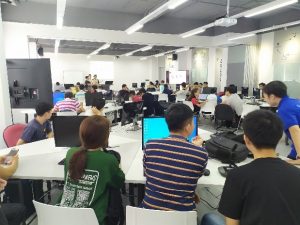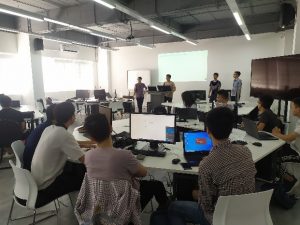 Course overview
Course overview
The course Scientific Computing helps students to grasp the basic concepts of scientific computing, common problems in science and engineering; methods and algorithms to solve complex problems in science and engineering. The course also helps students familiarize with the use of programming languages and tools to calculate as well as to develop software to solve complex problems in science and engineering.
The course includes topics as Calculating and programming using MATLAB, Error and condition of the problem, Numerical methods of algebra and calculus, Solving system of linear equations, Solving nonlinear equation, Approximation of derivative and integral, Numerical methods for differential equations, Curve fitting, Numerical methods for optimization, Non-linear programming, Linear programming, Matlab application in scientific computing.
Participants in piloting
The course Scientific Computing is a selection course for the 4th year of undergraduate student in computer science major at the School of Information and Communication Technology, Hanoi University of Science and Technology. In the first semester of the 2019 academic year, there are more than 40 students participate in the course. The course applied problem-based learning method.
Timeframe
Fall 2019.
Use of ALIEN services and tools
Students learn according to PBL and Active Learning method.
The course includes theory and assignments. Lecturer teaches theory to the whole class. Then, each student chooses a problem for assignment. Some topics students can choose are: Solving Diffusion equation, Jacobi method, regression algorithm, weather forecast problem, traffic optimization problem, curve match problem.
Students must study the problem, build algorithms, create program, run programs and evaluate, then make slides and present to the class.
During the course, students will be assisted by teachers and teaching assistants to improve their ability to solve a real problem in science and technique.
Erasmus + ALIEN Project supports equipment for PBL classrooms including projectors, screens, TV Monitors, laptops, Audio system.



